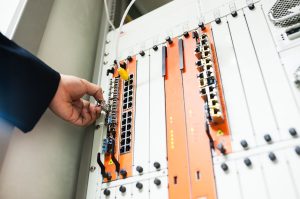Unlocking Global Connectivity: The Starlink Revolution

Unlocking Global Connectivity: The Starlink Revolution
Starlink is a satellite constellation developed by SpaceX, a private aerospace manufacturer and space transport services company founded by Elon Musk. The project aims to provide high-speed, low-latency internet connectivity across the globe, bridging the digital divide and connecting underserved communities. With its cutting-edge technology and ambitious goals, Starlink is set to revolutionize the way we access the internet.
At the beginning of 2022, Starlink had over 1,000 satellites in orbit, with plans to launch thousands more in the coming years. Each satellite is equipped with advanced technology, including Hall effect thrusters, Starlink-specific antennas, and sophisticated software. This enables the satellites to communicate with each other and with ground stations, providing a seamless and efficient internet connection.
How Starlink Works
Starlink uses a constellation of low-Earth orbit (LEO) satellites to provide internet connectivity. The satellites are positioned at an altitude of around 550 kilometers, which is much lower than traditional geostationary satellites. This lower altitude enables Starlink to offer faster speeds and lower latency, making it ideal for real-time applications such as video streaming, online gaming, and virtual meetings.
The Starlink system consists of several components, including the satellites, ground stations, and user terminals. The satellites communicate with each other and with ground stations, which are located in strategic locations around the world. The user terminals, which are small, compact devices, connect to the satellites and provide internet access to customers.
Benefits and Applications of Starlink
Starlink has numerous benefits and applications, including providing internet access to underserved communities, enabling remote work and education, and supporting emergency response and disaster relief efforts. The system can also be used for maritime and aviation communications, as well as for connecting IoT devices and sensors.
One of the most significant advantages of Starlink is its ability to provide internet access in areas where traditional connectivity is limited or non-existent. This can help to bridge the digital divide, promoting economic growth, education, and social development. Additionally, Starlink can be used to provide backup connectivity during outages, ensuring that critical services such as healthcare and finance remain operational.
Challenges and Controversies
While Starlink has the potential to revolutionize global connectivity, it also faces several challenges and controversies. One of the main concerns is the impact of the satellite constellation on the environment, particularly in terms of space debris and light pollution. There are also concerns about the potential for Starlink to exacerbate existing social and economic inequalities, as well as the risks associated with relying on a single provider for global connectivity.
In addition, Starlink has faced regulatory challenges, particularly in terms of obtaining approvals and licenses to operate in different countries. The company has also faced criticism for its pricing model, which some argue is too expensive for low-income communities.
Conclusion
In conclusion, Starlink is a groundbreaking satellite constellation that has the potential to transform global connectivity. With its cutting-edge technology, ambitious goals, and numerous benefits and applications, Starlink is set to play a major role in shaping the future of the internet. However, it also faces several challenges and controversies, which must be addressed to ensure that the system is developed and implemented in a responsible and sustainable manner.



